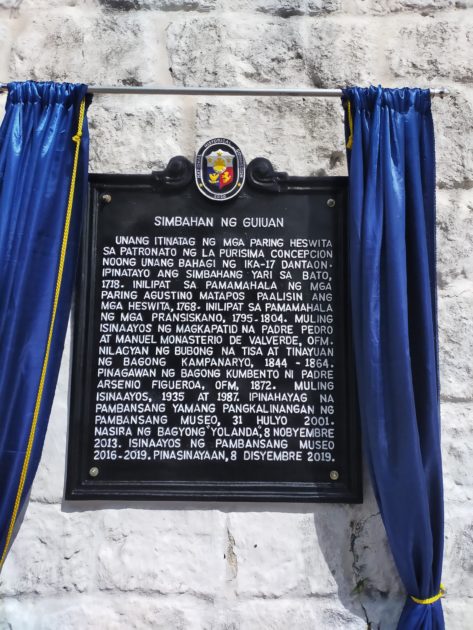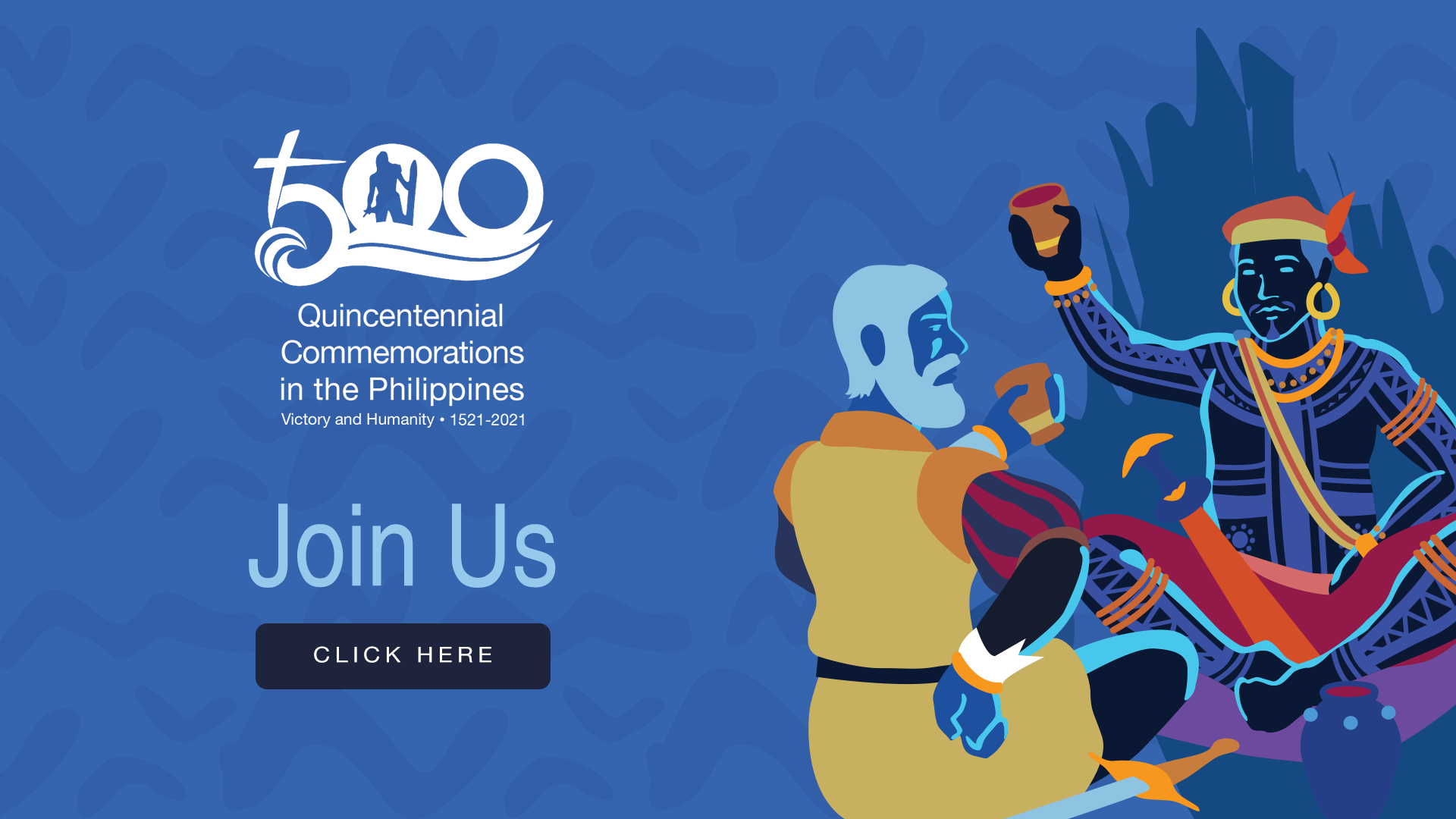Guiuan: Intersection of Nations and Cultures
Posted on 18 March 2021
By Rene R. Escalante, Ph.D.
Doorways play highly symbolic roles across different cultures: The Ancient Romans named the first month of the calendar year after Janus, the two-headed guardian deity of gates and portals. The Chinese install statues of guardian lions on either side of doorways to ward off bad omens and attract good luck. Jews place small prayer scrolls, or mezuzah, on door jambs in observance of Mosaic commandment. In the Japanese Shinto religion, the entrances to major shrines are demarcated by large red wooden archways called torii, a visual representation of the threshold which separates that which is regarded as mundane from that which is considered sacred.
For Christians, especially Catholics, special doors in the Basilicas of Rome are opened by the Pope at the beginning of Jubilee years, passage through which, together with fulfillment of specific acts of penance, grants plenary indulgences to the pious faithful. If I am not mistaken, I believe that the Holy Father, upon request of our Bishops, has declared a special Jubilee year for the Philippines starting from Easter Sunday of this year until April of the next, and the custom of designating special Holy Doors in imitation of the ones in Rome will be extended to particular churches here in our country, with this very church, the same church which we have just accorded the honor of a Historical Marker, being one of the few granted the privilege.

Why the talk of doorways, you may ask? Because this town of Guiuan was the figurative portal through which the Christian Faith arrived in our shores five centuries ago when the fleet under Ferdinand Magellan’s command anchored on the islands of Suluan and Homonhon after months spent adrift across the Pacific. And it was also through this very town, three centuries and fifteen years ago when Christianity found another portal through which it will extend its reach, once again, to another part of the world.
I presume you are already familiar with the first story, as it was the focus of our activities for the past few days. But let me regale you with the second one, of which this very church played a very important part.
Whereas the Sacraments were first administered in the archipelago in 1521 by Father Pedro de Valderrama, it was not until 1595, upon the arrival of the first Jesuits led by Fr. Francisco de Otazo, when the seeds of the Faith were firmly planted here in Samar. The zealous missionaries moved from one settlement to another, preaching the Gospel, baptizing converts and organizing them under parishes, Guiuan being one of the first to be formally established.
The town flourished under the spiritual administration of the Jesuits for the next century, and on the Feast of the Holy Innocents in the year 1696, no less than thirty castaways from the islands of Palau, after spending weeks adrift in the ocean, were washed ashore here in Guiuan, and, as what was the case with Magellan and his crew in 1521, the townspeople welcomed the castaways with open arms, gave them food and drink, and sheltered them in this very church, under the care of the incumbent parish priest. Moved by the charity they experienced, these people from Palau agreed to be instructed in the Catholic Faith and were baptized after a few months.
A year later, as they were preparing for their homeward voyage, Father Paul Klein, Provincial of the Jesuit missions in the Philippines, personally met with them while on a visitation in Samar, learned from them a rudimentary understanding of Polynesian wayfinding, and, after securing permission from the Superior General at that time, Fr. Tirso Gonzales de Santalla, sent priests to begin the work of spreading the Gospel in Palau. Ships from Manila sailed across the Pacific Ocean by way of Guiuan as the last stopover, and, after many futile attempts, successfully made it to Palau in 1710.
The Jesuits continued their pastoral work in Samar and Leyte until 1768 when King Charles III of Spain decreed the suppression of the Order. They were initially replaced by the Augustinians and were in turn replaced by the Franciscans in 1805 which administered the parish until the end of the 19th century as well as the end of Spanish colonization in the Philippines.
It was under the Franciscans when the parish church underwent a significant renovation, marked by another episode of magnanimity not unlike the two we have previously reminisced: recognizing that their parishioners also had temporal affairs to take care of apart from the salvation of their souls, the two brothers, Fathers Pedro & Manuel Monasterio de Valverde, in addition to renovation work on the parish church and the construction of a new bell tower, also spearheaded, the construction of a paved road connecting the peninsula where this town is situated to the rest of Samar Island, as well as a stone jetty, the very same jetty only a few meters away from us here, on to which seagoing vessels may safely berth and unload passengers and cargo. These undertakings of the two priests were by themselves doorways through which prosperity and progress began to spread from here to other settlements in the southern coast of Samar, including Salcedo, Mercedes, Quinapondan, and Balangiga, the fruits of which still continue to be reaped by the townspeople until the present.
Historian Gregorio Zaide once said that the Spaniards carried out their conquest of the Philippines “by the Cross and by the Sword.” Yet for the three centuries of our subjugation under the colonial yoke, we continued to struggle and fight against the Sword until the very end, while at the same time embraced the Cross, made it our own and part of who we are.
As the Holy Father himself said last Sunday, our Christian Faith is a gift we freely and willingly received, irrespective of the circumstances upon which it came to us. Whereas our ancestors found the idea of subjugation by a foreign power detestable, they did not reject Christianity outright, for they found in Christ and His message of loving both God and Neighbor values which they strongly identified with, and the benevolence and magnanimity that our forebears exhibited here in Guiuan attests to that. Before the waters of baptism touched the heads of our ancestors, they were already living witnesses to the Christian Faith by their charity towards Magellan and his crew, to which they stayed true by bearing witness to subsequent acts of charity, to the castaways from Palau, to the Russian refugees who were given asylum in Tubabao after the Second World War. Through Victory and Humanity, they were indeed Gifted to Give.
This very Church is a lone, silent witness to the long and storied history of Humanity which defined the course of our history as a nation for the last five centuries, and it is imperative for us to protect this treasure for the next generations to appreciate and preserve. Twenty years ago, the National Museum of the Philippines declared it a National Cultural Treasure not just for its storied history, but on account of its architectural quality and exquisite seashell ornamentation. Six years ago, we almost lost this treasure, after the onslaught of Typhoon Yolanda reduced this structure into nothing but mere rubble. Thankfully, through the efforts of the National Museum, the United States Ambassador’s Fund for Cultural Preservation, the Diocese of Borongan, as well as partners from heritage advocacy groups and the private sector, we were able to rebuilt was we once presumed to be lost.
And today, by our unveiling of a historical marker, the historical significance of this site becomes visible for all to see. Every parishioner and pilgrim who passes through the doors of this church shall be afforded the opportunity to learn the history of how this place became the intersection of nations and cultures, on which the universal traits of Humanity and Magnanimity, a trait which transcends race, language, culture & religion, manifested itself in separate occasions. I end with the hope that they in turn may be inspired by this historic trend, similarly embody the same virtues of Humanity and Magnanimity that our Ancestors exemplified in the past, and in turn, serve as a shining example of these truly-Filipino cultural values for the future generations to imitate and emulate.
Thank you very much, and may the Almighty God continue to bless us all.
Dr. Rene R. Escalante is the Chairperson of the National Historical Commission of the Philippines and the concurrent Executive Director of the National Quincentennial Committee. His message was delivered on his behalf by National Museum of the Philippines Director-General Jeremy Barns, during the unveiling of the historical marker of Guiuan Church, Guiuan, Eastern Samar, 18 March 2021

